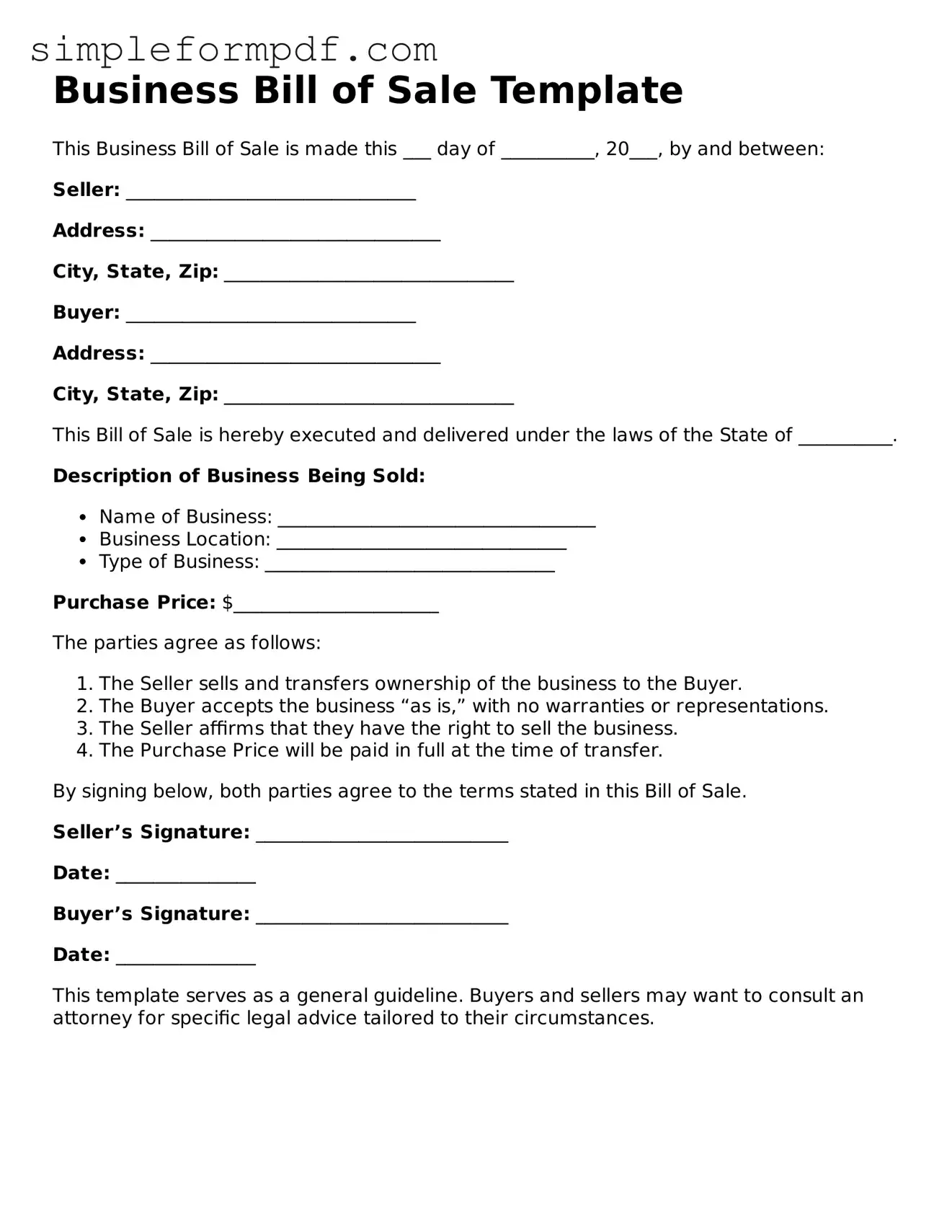Business Bill of Sale Template
This Business Bill of Sale is made this ___ day of __________, 20___, by and between:
Seller: _______________________________
Address: _______________________________
City, State, Zip: _______________________________
Buyer: _______________________________
Address: _______________________________
City, State, Zip: _______________________________
This Bill of Sale is hereby executed and delivered under the laws of the State of __________.
Description of Business Being Sold:
- Name of Business: __________________________________
- Business Location: _______________________________
- Type of Business: _______________________________
Purchase Price: $______________________
The parties agree as follows:
- The Seller sells and transfers ownership of the business to the Buyer.
- The Buyer accepts the business “as is,” with no warranties or representations.
- The Seller affirms that they have the right to sell the business.
- The Purchase Price will be paid in full at the time of transfer.
By signing below, both parties agree to the terms stated in this Bill of Sale.
Seller’s Signature: ___________________________
Date: _______________
Buyer’s Signature: ___________________________
Date: _______________
This template serves as a general guideline. Buyers and sellers may want to consult an attorney for specific legal advice tailored to their circumstances.
